How do your projects evolve? Do you get commissioned to go out and take pictures, or do you simply start producing photographs?
I knew from the beginning that I was not good at having someone standing over my shoulder and saying, “We need a picture of this, and could you get it from this angle?” I’m not someone’s puppet. I needed to do what was interesting to me. So the way that it worked in my case — and I’ve discovered that for every photographer there’s a different way — it was all very serendipitous and based on my curiosity. Anything that I’m curious about, I just go, “Ooh, I’m going to go check that out.”
For example, Tibet. For many years, I saw bumper stickers on cars here in Berkeley: “Free Tibet.” But I didn’t really know what that meant. So one day I was just like, “That’s it, I’m fed up. I don’t understand what these stickers are about and I want to know.” I arranged to go to Tibet and get a sense of what was going on. And why “Free Tibet”? What does that mean? What are the issues? I ended up falling in love with the place. But, pursuing curiosity this way, I have pictures that go nowhere. Nothing has happened with the Tibet work yet, and I went every year for four years. That’s the other thing that I decided: I like long-term projects. I don’t like to just go in and do something for a couple of days or a week or so. I like things that take years.
Why years?
One of my mentors photographically is Steve McCurry, who’s a National Geographic photographer. He’s famous for the Afghan girl with the green eyes. I traveled with him in Tibet in 2004, and we became good friends, and I consider him my photographic father. He really took the time to remind me that photography really is all about being incredibly sensitive to quality of light. You can have the best composition, best subject, but if you want to have an image that is going to resonate for a long time, you have to have this sensitivity to light.
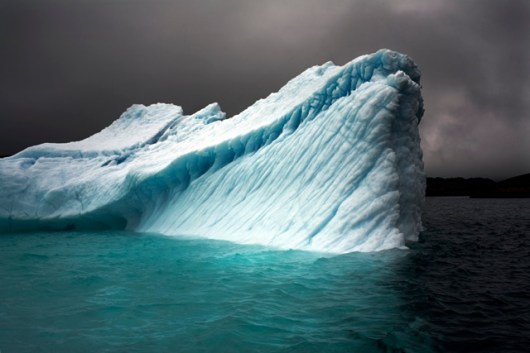
But one of the other things he said to me, which I find is true, is, “You can’t fake time,” in reference to people who do go in and make a couple of images and say, “Okay, that was the Iraq War,” in three days. You put that person’s work next to someone who has been in and out of Iraq for a decade or two or even three, and you’ll see just how many holes there are in the work that was done in just a few days or weeks. When you dedicate that much time to a project, things reveal themselves. You might go one time, and think, “Oh, this is the truth and this is reality and this is how I feel.” And that’s all you get. If you go back again, it may be the same, or you may realize, “Wow, I am experiencing something completely different.” So I think it’s really important to put time into something and not just do hit-and-run photography.
So did the polar work come about out of a sense of curiosity, too?
The polar work was really where I was called to do something unique. At the age of 32, this little switch came on inside me and I knew I wanted to be a photographer. That was what I was going to use to make a statement about life on this Earth and the importance of appreciating what we have here. With that intention, a lot of opportunities opened themselves to me. I lived in the jungle with some people in Panama, just documenting. I was really interested in cultures and people that were on the verge of a massive shift in their lives and their way of living. I really thought I was going to be a people photographer.
I showed that work to magazines. They said, “Oh, it’s too pretty. You should show this to art galleries.” So I showed it to galleries. And they said, “Oh, it’s too photojournalistic. You should go show this to magazines.” Feeling stuck in this place where my work was pretty but informative was at first a little frustrating, because people were trying to fit me into a box, and I was sad that they couldn’t see that there was more to what I did. But I wasn’t about to change to squeeze myself into one box or another.
At the same time, I was also showing some work that I took in the Arctic and Antarctic. I had gone as a tourist with my family, on a small icebreaker. I didn’t know what I was going to do with that work, but in 2006, I took it to a jury portfolio review, Review Santa Fe, and was accepted. A woman saw pictures of my icebergs. She said, “Wow, this is amazing. Do you have more of these?” I said, “I have about a thousand of those.” She said, “Make that into one body of work.” And that one piece of advice was brilliant.
So I packaged up a group of icebergs, and that was my first portfolio, called “The Last Iceberg.” Then, I entered the images in a book competition run by Photolucida, only hoping for exposure, not hoping to win. I ended up winning. From there, museums started calling me, magazines started calling me. It became this little snowball. I started getting exhibitions in museums. It just gained momentum, in part because in 2007, the UN announced that global warming was happening.
Why do you think your photos of icebergs resonate with people?
Of course, I knew I wasn’t the first person to photograph icebergs. But I think that the difference is, when I was standing in front of these icebergs, I wasn’t seeing them as just chunks of ice. To me, because of the way that I was raised as a Shinnecock, I was looking at life – not water frozen as ice. I wouldn’t go so far as to say I see icebergs as sentient beings, but each one was arranged in such a unique, individual way. I couldn’t help but see that each iceberg has its own personality, and each one reacts differently to its circumstances. When I photographed them, I had the intention and perspective of photographing them as though I were making a portrait. I think somehow that sense of aliveness is communicated through the images.
How worried were you at the time about global warming and the fact that they were melting? Did you feel that you were documenting something that was disappearing?
When I first went to the Arctic it was 1999. When I first went on a ship and saw sea ice was 2003. And the first time I was in Antarctica and saw an iceberg was 2004. During this time, there had been rumblings and rumors of “This is all melting. It’s not going to be here,” but because I had only had a couple of years’ exposure, I only knew that I wanted to document what was.
I wasn’t necessarily thinking about “This is all going to be gone.” It was much more serendipitous and intuitive and instinctual. It was just, “Here I am, and I’m going to make images that reflect how I feel being here. ” So I did that. The polar regions are a place that you either love or you hate, there’s no in-between. And for me it was instant love. It’s a place of extreme solitude, and at the same time there is also this profound sense that I could really feel my connection to it all when I was there. It’s a very powerful experience to be so isolated, so vulnerable, so exposed and at the same time feel so absolutely interconnected. I was hoping that the images I was making were going to communicate that.
It wasn’t until 2007 did I start to hear the words climate change and global warming and then think, Hmmm, how does that fit with my work?
So what was the turning point for you?
In 2006, I was given a National Geographic Award — a small amount of money and their stamp of approval. This got me passage on a Russian icebreaker on the far side of Antarctica for over a month-long expedition. What was cool was this was a proper working icebreaker, so it has two helicopters, which meant we could fly to places you can’t get to by ship. We flew to the Dry Valleys and we flew to Shackleton’s hut and Scott’s hut. And to be inside those places — you could smell history. It was just that beautiful old smell of leather. And this was almost 100 years to the day that they had been there.
It was so moving for me, because who would think that just a hundred years after all of this incredible explorative history of mostly white men, that a woman, a Native woman, a black American — I’ve ticked every checkbox of minority there is, almost — could be standing in that place? Mount Erebus, which is this big volcano, is always steaming. It looks identical to the images that Ponting and Hurley made a hundred years ago. It was just so incredible to be in there and see their sleeping bags. They left everything — all their science equipment is there, newspapers, food they didn’t eat, a lot of Hershey’s chocolate. I was deeply moved.
How did this expedition change your perspective?
When those people traveled over a hundred years ago, they felt very small as humans. And perception-wise, the Earth happened to us and we could only bear it. And within a hundred years, just a hundred years, we’ve spun that on its side. Now humans, who seemed so insignificant, are affecting the whole planet with our activities. I really started to feel that difference of how much had changed in a hundred years and what a slippery slope we were on.
When I speak publicly, I try to avoid using the terms climate change and global warming, primarily because maybe now after 10 years my work is a record of a period of time that was quite critical — sort of the tipping point. But as I was doing it, my message and purpose were more about showing people places that we were taking for granted. Now they’ve become these images of what we’re losing, or what we’ve already lost. I suspect in 10, 20, 50 years from now, people will look at those images and say, “Wow, the Earth was like that once?” So what the images mean while I made them has already started to change now that I feel like I’m finished with that project.
Do feel like you’re done with the icebergs, then?
Actually, I’m currently writing a grant to join a small group that sends around a dozen artists on a little ship to Svalbard, in the Arctic. The first time I went to Svalbard was in 2003. It was there, really, that I fell in love with the sea ice and that environment. I decided, how cool would it be to end where I began a decade later, because it’ll be 2013? I want to call it “Full Circle,” and I want to revisit the images that I made in 2003 and rephotograph them: this is what it looked like 10 years ago, this is what it looks like now.
I think it would be a really great way for me personally to finish. When I left the Arctic in 2011 in August, I knew — I could feel it, I could see it — that that tipping point that we’d all been talking about, the threshold, was breached, and it is no longer about whether we can avoid this. It is now a new paradigm. And honestly, I was heartbroken, crying a lot, because it was so dramatic. There was no snow. It was, most days, 60 degrees. We were less than 500 miles from the North Pole. There were polar bears everywhere on land because there was no ice. I observed polar bears destroying bird colonies because they were so hungry, they were just going from nest to nest eating the eggs. These birds had traveled thousands of miles to lay their eggs and raise their chicks. So this one bear, in a couple of hours, absolutely devastated a whole generation of eggs. Glaucous gulls, kitty wakes, eider ducks, king eider ducks. It was a devastating scene.
And Svalbard is also the place where the Global Seed Vault is, where world crop biodiversity is being stored. It’s really interesting that you’re going up there to document the fact that we’ve breached the tipping point, and exactly at that spot is the ark.
Exactly.
How did your experiences as a young person growing up between cultures influence your life path as a passionate and intrepid photographer?
A lot of people would say that the things that have happened to me in life were bad. For example, I grew up as part of a mixed marriage. My father’s American Indian and my mother is black and Italian. That in itself is a conflict, because my mother was Roman Catholic and my father really worshipped the Earth as this living, breathing thing. I was told to hold a tree and feel it moving very slowly, but that it had a life force moving in it, and it just moved at a different pace, but it had life.
When my parents divorced, my mother got custody of us, and being Roman Catholic, she decided it was time to, and I quote, “Christianize her heathen halfbreed children.” It became a very different experience. And I did not gel well with the hypocrisy that was so entrenched in practicing what I saw in Christianity.
So probably starting at the age of 10, I spent more time alone in my room drawing and making art than playing outside. I knew how to be alone with myself and how to create things. By the time I was 15, things were terrible with my mother. I couldn’t take it anymore, and I left. At the time, I was going to the High School of Music and the Arts, the Fame high school. That was in Manhattan and I went to stay with my grandmother, who lived on Long Island. I had to get up at 4:30am to make it to school on time. It was a ridiculous commute. I was falling behind. I started to spend the nights sleeping on different friends’ couches. I got odd jobs, including working at a one-hour photo lab, so I was looking at images every day.
Because the school recognized that I was at risk — I was essentially homeless, although I’ve never, until this moment, actually called myself that — they gave me a Nikkormat camera and taught me how to bulk load film and develop it. But they didn’t teach me how to use a camera. They said, “You have to figure that out on your own. Go and photograph your experience.” And I did. It became my outlet emotionally to record everything that was going on in my life, my friends, the things we were doing. We were a bunch of punk rockers, so lots of adventures and misadventures. I have all those pictures. I didn’t realize it, of course, at the time, but that probably saved my life, to give me that camera and give me a way to vent my anger, frustration and emotions in a creative way.
These little things may not seem like much, but they were the seeds.
You pursued your career while your daughter was very small, sometimes taking her with you and sometimes leaving her behind for months. Is it difficult?
Whenever I speak about my work, there’s always one woman in the audience who criticizes me for leaving my daughter for months at a time. But I say, what kind of mother would I be NOT to do what I do? How can I say to her, “Live your dreams, be what you want to be, but I can’t, because I have to put my needs behind everyone else’s”? I feel that it would really be hypocritical. We’ve been quite lucky. She’s traveled with me since she was two-weeks-old, and we’ve been to probably a hundred countries. She’d been on all seven continents before she was 7, and saw her first polar bear in the Arctic when she was 3. And it shows in her personality — she’s really comfortable with who she is.
I was raised to be a questioner and an explorer, and that’s the example I want to set. Serendipitously, everything in my life has aligned in such a way to build me to be how I am so that I can do what I do and I see the world the way I do. In leaving home, I was able to learn that there’s always another way, that anything’s possible. I’ve become a master of the possible. If I want to go to Siberia, I’d get there, and I have. If I want to go anywhere, I know I can go. It’s not a matter of how, it’s just a matter of do I want to do it right now and why.
My grandfather, a Shinnecock Indian, raised me to know that you cannot be a whole person without touching — we call it touching, but it means experience — the four directions. And the four directions represent your innocence, they represent your wisdom, they represent growth, they represent the sacred. And you must, if you want to grow into a full — or what we call beautiful — human being, you have to visit these directions. Whether you take that literally, like I have, to travel, or in some more local way, one must experience. And so I honor that by doing what I do — by being open to experience and possibility.
How has being a TED Fellow had an impact on your life and work?
I not only see that so much more is possible, but I feel so much more capable of doing it! And being a TED Fellow has had such a profound and tangible impact: not just the exposure of my work to the world, but by including me in a group of peers who push the envelope of what is possible — with courage and integrity. I feel that I have found a positive motivator. I can look across the table and say to myself, “Look what amazing things these incredible individuals have done. What, Camille, are you going to contribute?”
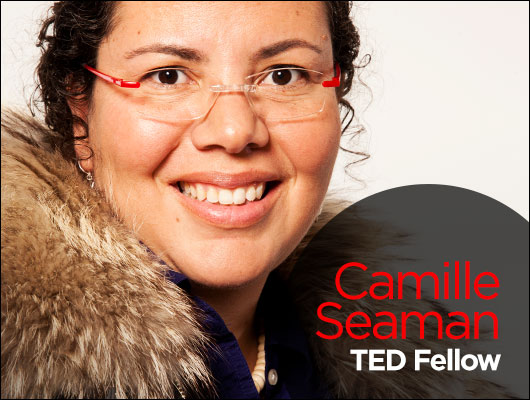
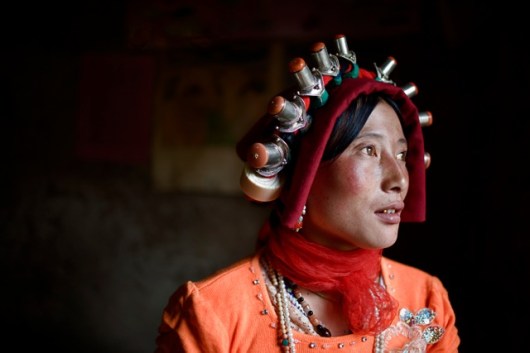
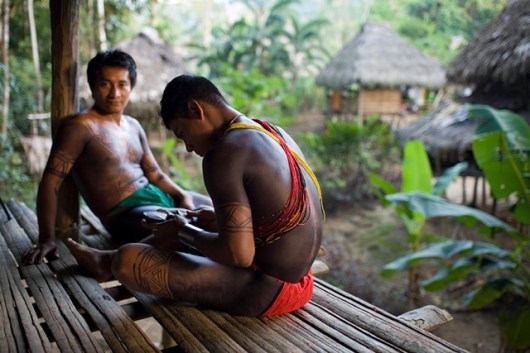
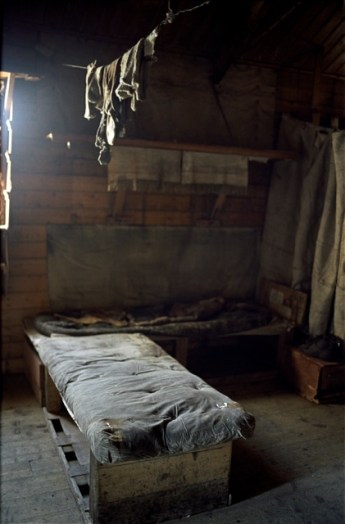
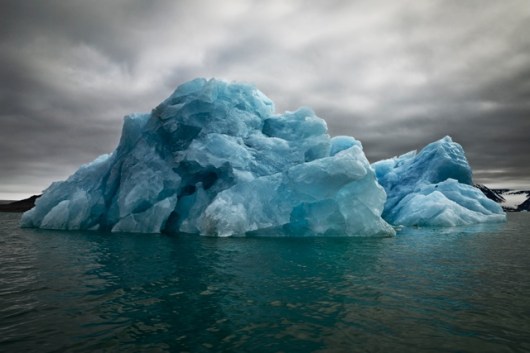
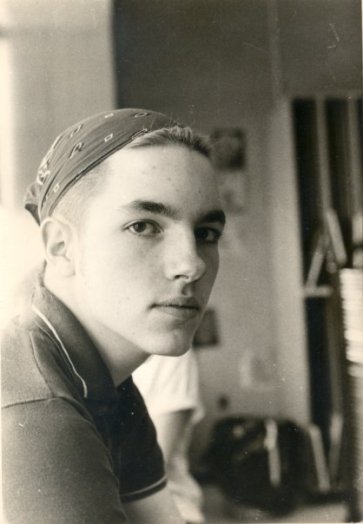
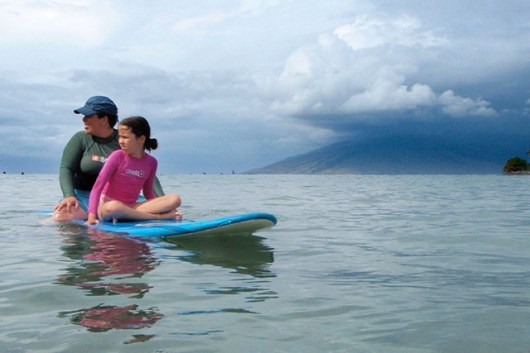
Comments (4)
Pingback: buy steroids legit
Pingback: Official Kalpa
Pingback: Gallery: Chasing storms with Camille Seaman | Krantenkoppen Tech
Pingback: Sea Level Rise | Living Sea Sculpture